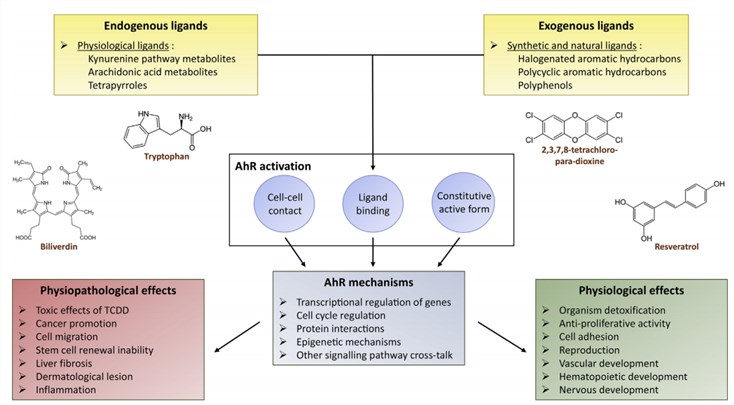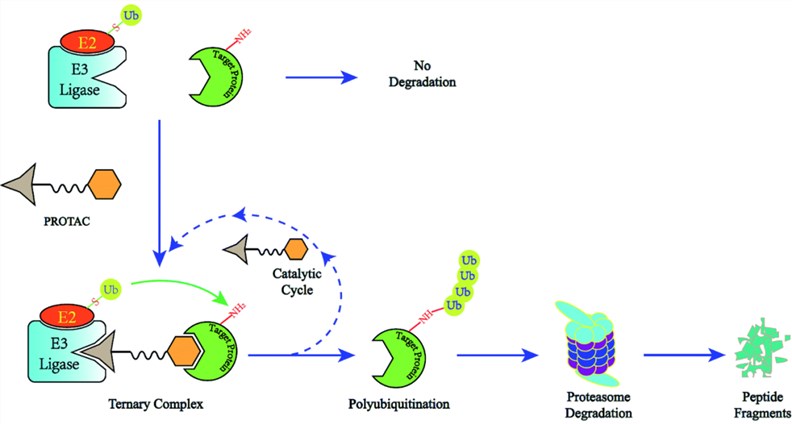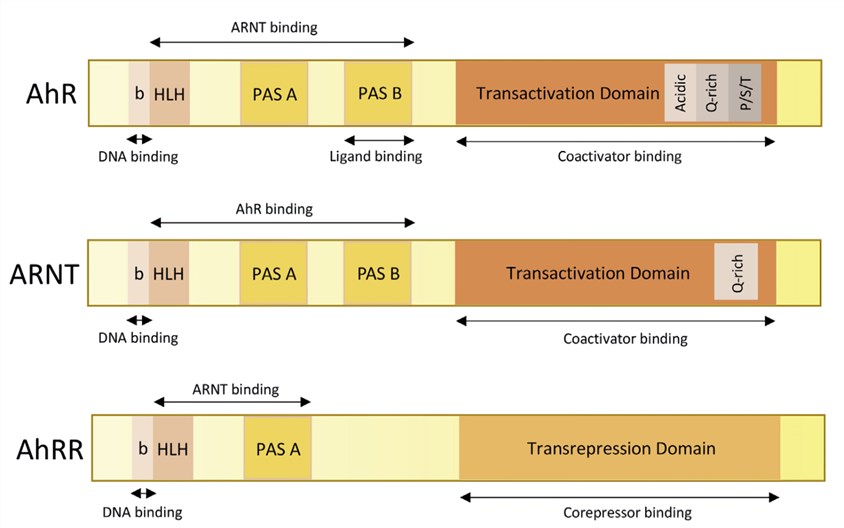The aryl hydrocarbon receptor (AHR), a member of the basic helix-loop-helix (b-HLH) transcription factor, is a regulatory protein broadly expressed in human tissues. AHR tends to be highly expressed in lung and liver, the main human contacting and metabolic organs of toxins, and plays significant roles in detoxification of aryl toxins. Increasing evidence suggests that AHR is involved in the pathogenesis of multiple diseases, such as cardiovascular diseases, immune-related diseases, and tumors.
In recent years, AHR has been developed as a potential target for disease treatment due to its significant functions in the immune response and cancers. AHR inhibitors or antagonists also have been extensively investigated for the therapeutic value of cancers, especially the chemo-preventive effects. Moreover, AHR-targeting proteolysis targeting chimera (PROTAC®) has been demonstrated to be a new potential AHR “antagonist” for cancer treatment with high efficacy. For this novel therapeutic PROTAC® molecules, Creative Biolabs offers a diversity of customized products and services to clients all over the world.
 Fig.1 The functional relationship between the AhR ligands and the regulatory roles of this receptor in physiology and pathophysiology. (Larigot, 2018)
Fig.1 The functional relationship between the AhR ligands and the regulatory roles of this receptor in physiology and pathophysiology. (Larigot, 2018)
Since firstly described in 2001, PROTAC® has been developed to be a promising and widely applied technology for drug discovery. Generally, a PROTAC® is a class of heterobifunctional molecules composed of a target ligand and an E3 ligase ligand connected by an optimal linker. Different from conventional enzyme inhibitors, the PROTAC® usually functions by targeting degradation of various proteins, extensively including nuclear receptors, kinases, regulators proteins, fusion proteins, and so forth.
As shown in Fig.2, upon the ligands respectively bind to the protein of interest and E3 ubiquitin ligase, the target protein will be polyubiquitinated by E2 ubiquitin-conjugating enzyme. The ubiquitinated protein is recognized and subsequently degraded by the proteasome. Meanwhile, the PROTAC® molecule is released for the next round of protein degradation.
 Fig.2 The degradation cycle of an E3 ligase using PROTAC®s. (Pei, 2019)
Fig.2 The degradation cycle of an E3 ligase using PROTAC®s. (Pei, 2019)
Structurally, human AHR consists of three functional domains (i.e., bHLH domain, Per-ARNT-Sim (PAS) domain, and transactivation domain) with 848 amino acid residues. Each domain is responsible for binding to different ligands to play different biological activities.
 Fig.3 The functional domains of the AhR, ARNT and AhRR proteins. (Larigot, 2018)
Fig.3 The functional domains of the AhR, ARNT and AhRR proteins. (Larigot, 2018)
Creative Biolabs offers specific AHR-targeting PROTAC® design services based on the structure and function properties. Firstly, we can optimize and modify the existing AHR-PROTAC®s to obtain more effective PROTAC® molecules. More importantly, we prefer to screen small molecules prone to target or react with AHR by in silico, by which the PROTAC® complex inhibits and degrades AHR effectively. Furthermore, bioactive peptides, recombinant proteins, and recombinant antibodies that specifically bind to AHR are also taken into consideration for the PROTAC® design and optimization.
For any question or interest in PROTAC®, please feel free to contact us and our experienced technicians will give you the most detailed answers to your questions.
References
Our customer service representatives are available 24 hours a day, from Monday to Sunday. Contact Us
